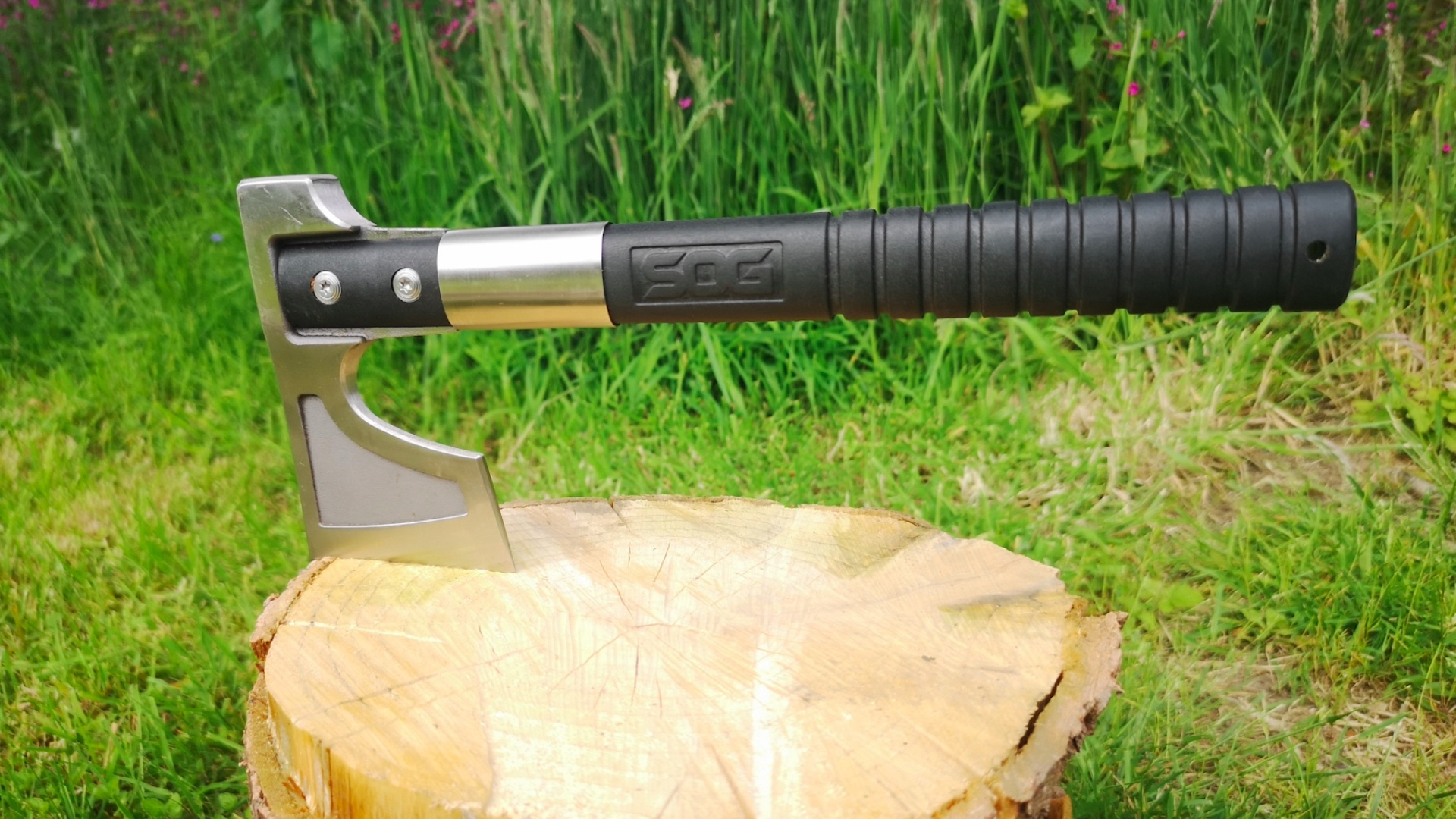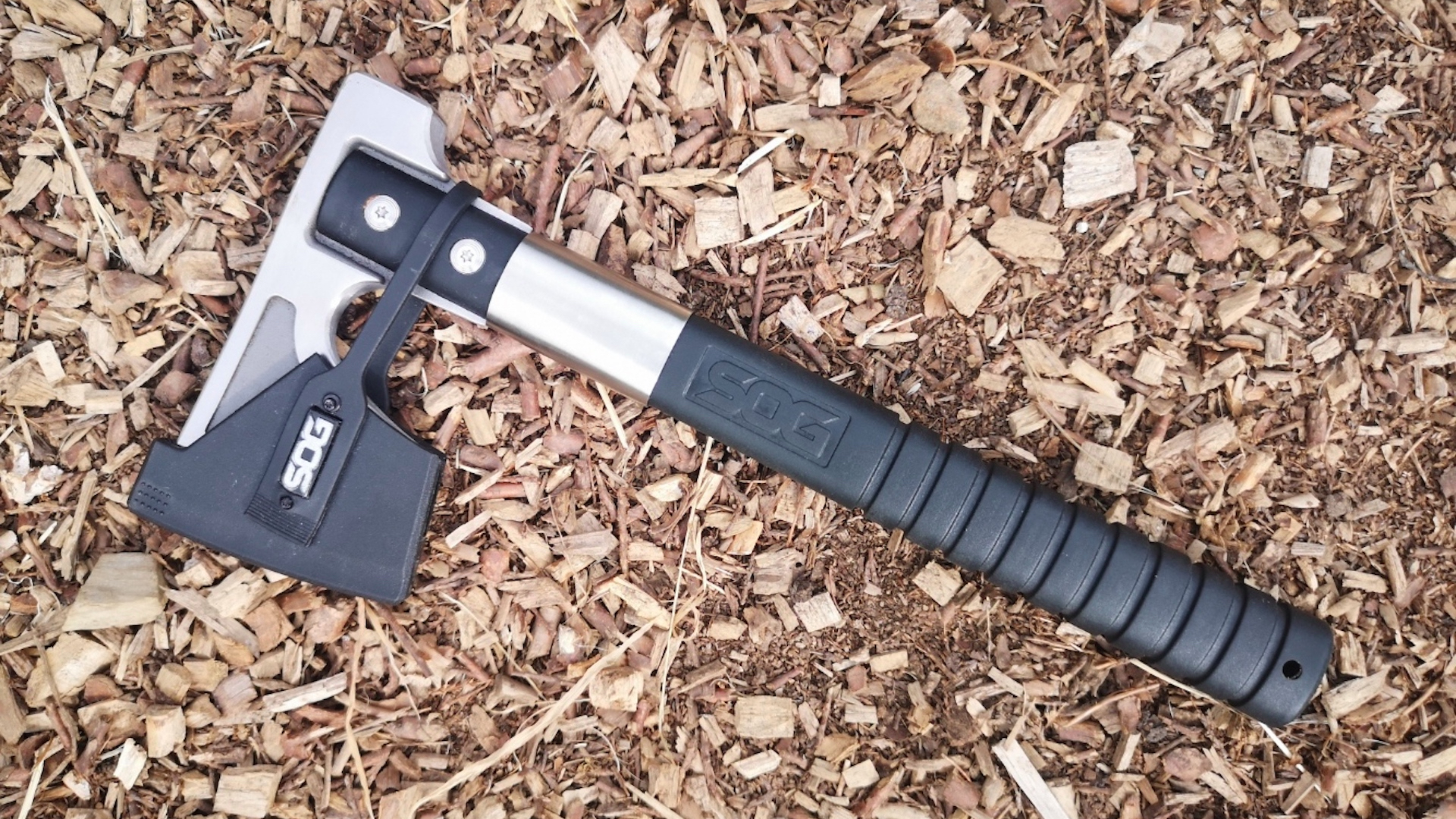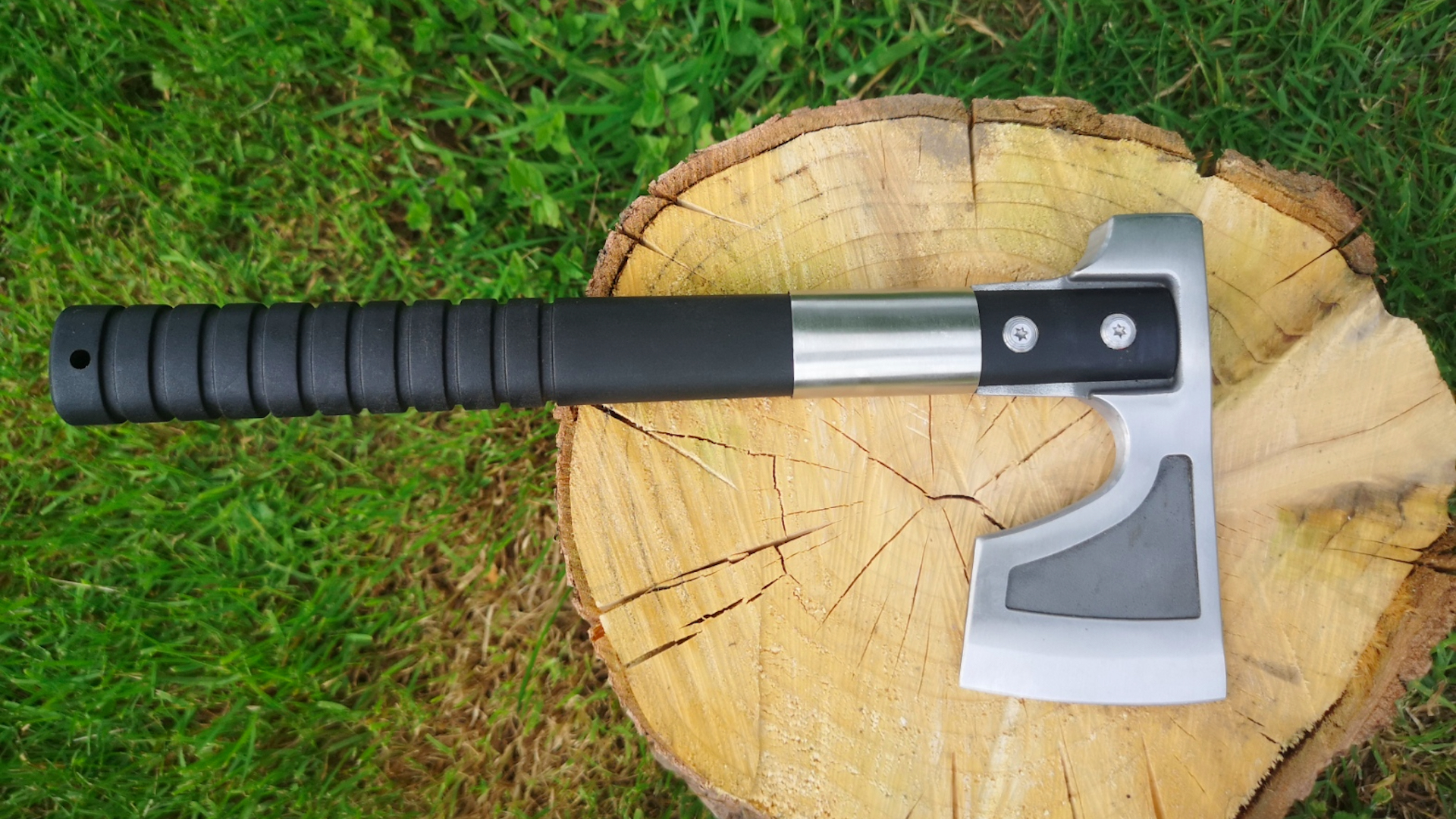Advnture Verdict
Extremely light and compact, this little hatchet will slip easily into a pack or even hang off a belt. Though those qualities inevitably limit its usefulness for heavy work, when used for light camp tasks it’s a decent enough performer, whether you’re whittling wood, chopping kindling or hammering in tent stakes.
Pros
- +
Very light and compact
- +
Stainless-steel head and collar
- +
Useful poll or butt for hammering
Cons
- -
Short, flat bit lacks penetration
- -
Fiberglass handle isn’t the most comfortable or secure
You can trust Advnture
SOG Camp Axe: first impressions
With a reputation for producing specialist hunting, survival and military-tactical equipment, SOG is a brand that you might not immediately turn to when looking for tools designed for camping and general outdoor use. But actually, in our recent review of the best camping knives we were very impressed with the brand’s Terminus Slipjoint, and we also included their folding Wood Saw in our best camping saws roundup.
• RRP: $75 (US) / £61 (UK)
• Weight: 470g / 16.6oz
• Blade length: 7cm / 2.75in
• Overall length: 29cm / 11.5
• Head: Stainless steel (satin finish)
• Handle: Glass-reinforced nylon
• Head guard: Black plastic
The US brand also produces a range of hatchets, throwing axes and tomahawks. Many of these are sleek, mean-looking weapons designed to appeal to survivalists and preppers, but the SOG Camp Axe is a more modest and practical tool intended, the brand says, “for starting fires, clearing campsites and hammering tent stakes”. So how does it compare to other entries in our best camping axes buying guide?
It is certainly light in weight and small in stature, which ensures it is easy to transport and stow. It is supplied with a simple plastic sheath that protects the blade and the front part of the axe head. The head itself is made of stainless steel, which ought to ensure good resistance to corrosion even in damp and humid conditions.

The head has a wedge profile with a blocky poll or butt for hammering things like tent pegs. It’s an unusual shape, with a pronounced cutaway a little like a carpenter’s axe, which actually makes this a good little whittling tool.
The handle is made of glass-reinforced nylon – fiberglass, in other words – and secured with two fasteners. The upper part of the handle is protected by a steel collar, while the lower portion has molded grooves for grip, debossed “SOG“ branding and a small lanyard hole. It’s a simple, straight-shafted handle, with no shoulder or palm swell.
SOG Camp Axe: in the field

This hatchet’s short length and light weight make it easy to carry, whether in a hiking backpack or on a belt. It’s easy to wield, even in the confines of a small campsite, and has some very practical features. Firstly, the stainless-steel head and fiberglass handle mean you don’t need to worry too much if it gets left out in the rain, as it won’t rust, rot or absorb moisture like a wooden-handled axe with a carbon steel head.
The poll or butt on the back of the axe head is blocky and robust, which is great for hammering. It knocks tent stakes into hard-packed ground easily. The bit has a tapering, wedge-shaped profile that does a pretty good job of processing firewood for kindling too. Admittedly, there’s not really enough head weight to split logs, though it can be done with a bit of effort (see also: How to chop firewood). We appreciated the fact that this hatchet is fitted with a steel collar though, which protects the handle and means you can give it a bit more grunt when chopping wood without worrying about damaging the axe.
All the latest inspiration, tips and guides to help you plan your next Advnture!

That’s just as well, since the bit is relatively short and shallow, which means this axe tends to lack penetration. It’s not a problem if you’re only dealing with dry, seasoned or very straight-grained wood that splits cleanly, but it does tend to stick in knottier wood. For us, the SOG Camp Axe wasn’t quite as effective around camp as Mora’s Lightweight Axe, despite being a similar weight and length.
On the other hand, for finer cutting tasks, we preferred the SOG Camp Axe. The unusual lower cutaway in the head makes it easy to choke up on the handle, giving much greater precision and control if you’re whittling wood, shaving bark or removing twigs from branches.
We didn’t love the fiberglass handle. It has molded grooves that give reasonable grip, but the straight shaft isn’t the most comfortable or efficient in use. The lack of a palm swell at the end of the handle means you also need to keep a firm grip on this hatchet when chopping.
Still, despite some gripes, this is a practical camp tool that can hammer, chop and even whittle. If used purely as a traditional hatchet for splitting kindling and small logs for firewood, we preferred the similarly compact Mora Lightweight Axe, which is also around the same price, but the SOG Camp Axe is arguably slightly more versatile around camp.
An outdoors writer and editor, Matt Jones has been testing kit in the field for nearly a decade. Having worked for both the Ramblers and the Scouts, he knows one or two things about walking and camping, and loves all things adventure, particularly long-distance backpacking, wild camping and climbing mountains – especially in Wales. He’s based in Snowdonia and last year thru-hiked the Cambrian Way, which runs for 298 miles from Cardiff to Conwy, with a total ascent of 73,700 feet – that’s nearly 2½ times the height of Everest. Follow Matt on Instagram and Twitter.


